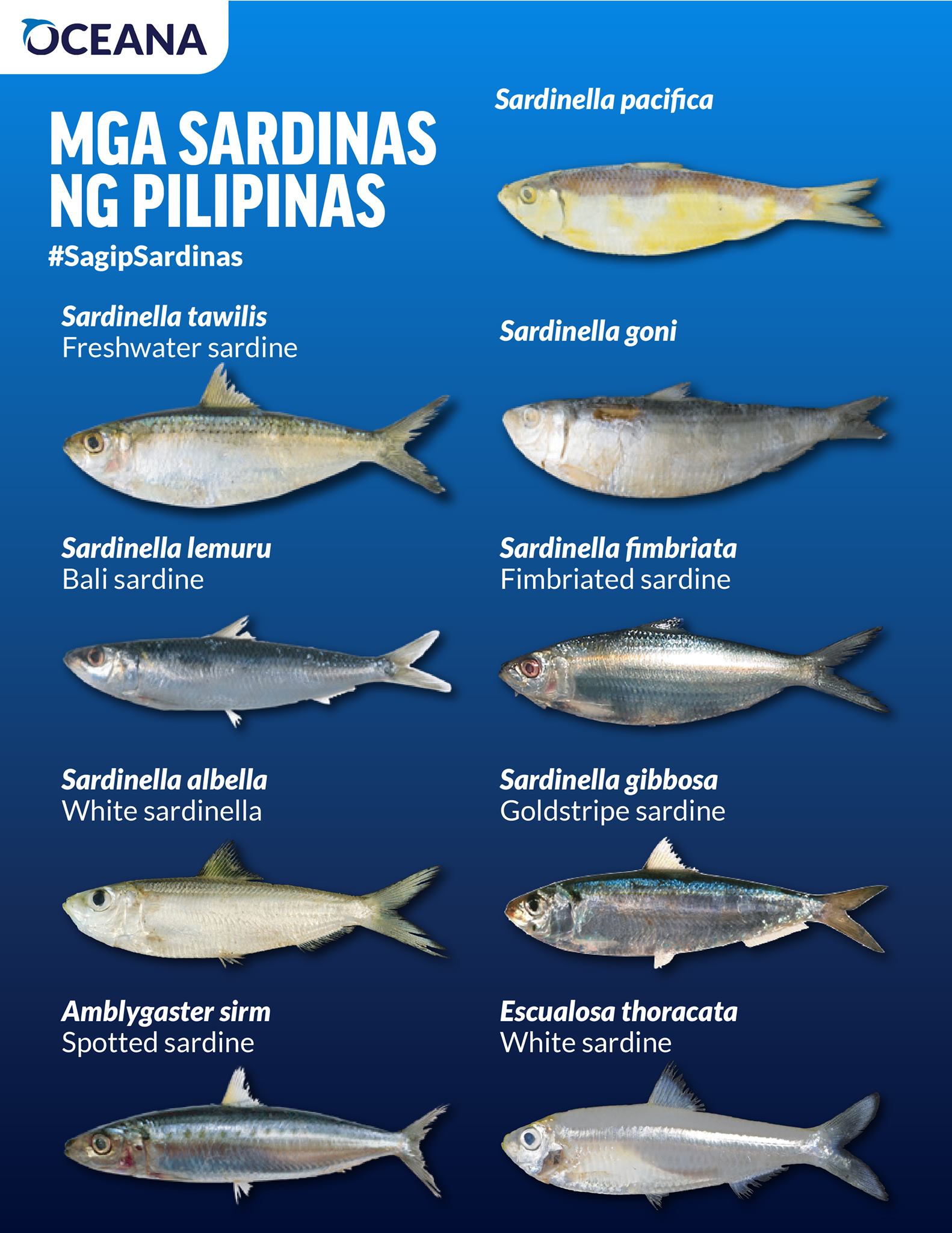In times of crisis, sardines are a staple in relief packs.
To those who are not allowed to go out because of the enhanced community quarantine, sardines have become a staple in the pantry, whether canned, bottled, or smoked and dried.
In the survey by the Social Weather Station together with Oceana in 2017, 70 percent of Filipinos eat fish or any seafood for five days in a month; three out ten (30%) Filipino adults nationwide ate sardinas/silinyasi/tunsoy each month.

Yet, maybe because of its size, it is one of the most undervalued fishes in the Philippines, in terms of protection and management mechanisms. It is one of the least pricey seafood sources of protein for most Filipinos.
The sardine industry is also an important economic driver providing jobs and livelihood, for small scale entrepreneurs in the dried and smoked sector, and for factory workers in the canning and bottling sectors.
Ecologically, sardines are important part of the marine food chain being a major forage species of many predatory fish species, mammals, and cetaceans.
Given the significance of sardines to the Filipinos, it is imperative that these resources should be sufficiently managed for its harvests to be forever.
International non-government organization, Oceana, honors sardines with the attention it deserves, dedicating one of its campaigns to sardines protection. The advocacy organization calls on the Department of Agriculture and the Bureau of Fisheries and Aquatic Resources to promulgate the long- overdue National Sardines Management Plan.
“Fisheries Management Plans are an excellent way to organize the existing biological, economic, and social information about sardines. It is also an ideal platform to make sure that all present and future governance and management mechanisms are coordinated, and part of a cohesive framework especially as we now have the Fisheries Management Area system. It also provides opportunities to set realistic goals for a fishery. Those who participate in a fishery can decide, for example, that their medium-term objective is to recover the population of the target species, maintain employment structure in a community, or achieve the maximum economic yield,” explained Atty Gloria Estenzo Ramos, Oceana Vice President.
According to Oceana, there is ample evidence that the fisheries with the best results are the ones that are governed through participative processes. Given the goals and objectives, the Fisheries Management Plan (FMP) for sardines allows for the creation of a framework for monitoring and evaluation of its progress for the sardine fisheries managers and users to have information for timely decisions to be made. Good FMPs are living documents, which contents are revised and adapted every so often, ideally three to five years.

“Aside from being the preferred food for our urban households, our poor fisherfolks have been dependent on sardines their food and livelihood. It is an important fish for the Philippines as we take pride in nine species found in different parts of the country. However, their life is finite. It is one of the victims of overfishing caused by the lack of a science-based, cohesive, sustainable management of sardines fisheries,” said Ramos.
The National Sardines Management Plan went through several public hearings and consultations for the past three years. The National Fisheries and Aquatic Resources Management Council has recommended its approval.
Data from the Philippine Statistics Authority (PSA) show that 15 percent (average of 333,743 metric tons) of total marine fisheries production came from sardines in the past 15 years. Municipal fisherfolks contributed 35 percent of this production and the other 65 percent was from commercial fishing sector.
“The approval of the National Sardines Management Plan is not only imperative for the sectors dependent on this industry for their economic interests. With the COVID19 pandemic, we saw again how important this is for our food security and health. Without sustainable management in place for this very important fish, our children may not be able to experience and even know that there is this nutrients- packed favorite food of our generation,” said Ramos.
Oceana is an international advocacy organization dedicated to protecting the world’s oceans. Since 2014, Oceana has been working closely with national and local government agencies, civil society, fisherfolk and other stakeholders to restore the abundance of Philippine fisheries and marine resources.
—
Joyce Sierra
Communications Manager, Oceana Philippines
E-mail: [email protected]
Facebook: www.facebook.com/oceana.philippines
Twitter: @oceana_ph
Instagram: @oceana_ph






